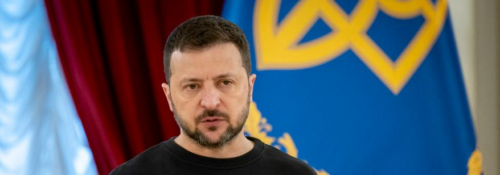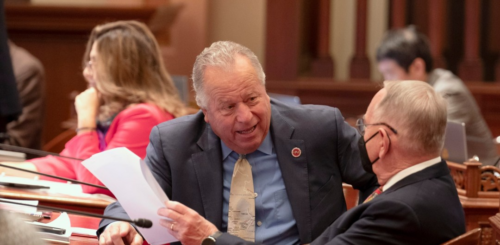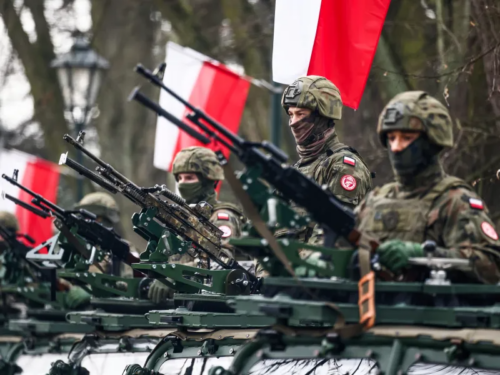Washington Monthly: What If the US Had a Multiparty System Like Germany’s?
01.03.2014
With the U.S. still barely recovered from to al partisan gridlock and political dysfunction, Germany has once again formed a “grand coalition” bringing together the two main center-right and center-left parties, which collectively won more than 70% of the vote in last September’s parliamentary elections. The biggest sticking point? Figuring out the best mechanism for determining the country’s minimum wage.
How do the Germans manage to produce such cooperation and consensus in a system of five parties – and what might politics look like if the U.S. had such a multiparty system? Part of the answer in Germany lies in the intricate construction of its electoral process which, for obvious historical reasons, was designed after World War II to decentralize and disperse power.
Members of the lower house of parliament, the Bundestag, are chosen through a process in which each German citizen has two votes. The first vote, as in the U.S., is cast for an individual person to represent a specific electoral district. The second, and ultimately more influential, vote is cast directly for a political party and determines the overall party composition of government.
Such use of a proportional representation system almost guarantees that Germany will have a multiparty system. But in order to avoid chaotic hyper-fragmentation among parties (as found, for instance, in Italy) Germany enforces a threshold of 5% for a party to enter into the Bundestag. Essentially, any party that fails to gain at least 5% of the national vote is excluded from parliament, a provision that has proven useful in promoting centrism and marginalizing extremes, including both neo-fascist parties and the remnants of the old Communist Party in East Germany.
In all, the German system has tended to yield parliaments with about five parties represented — which is also roughly what the U.S. political system might produce under similar rules.
Consider first the Democrats in the U.S., who have long been a loose coalition between classic “blue collar voters” (who have a strong interest in issues like labor rights and the social safety net) and socially liberal voters (who are focused more on themes of multiculturalism and diversity). Of late, the two branches have been cooperating well. But the old fault lines can still turn up, such as in the debate over immigration, in which one wing is mostly concern about domestic wage competition and the other side places more emphasis on the civil rights of minorities. It’s not hard to imagine the blue-collar Democrats and the socially liberal Democrats forming separate parties under a proportional representation approach.
The Republicans, it’s now evident, are much more fragmented, consisting of a rump of “Establishment Republicans,” a Tea Party cohort maniacally focused on reducing the size of government, and a religious right that prioritizes “traditional values.” Clearly these groups do overlap, as perhaps best illustrated by the fondness of Michele Bachmann both for overturning Obamacare and for heralding the arrival of the Rapture. In a multiparty system, these various branches wings would likely sort into three separate parties – thus totaling five parties across the political spectrum, as is usually the case in Germany.
This year in Germany, the 5% threshold led to this exclusion of the small, free-market oriented Free Democratic Party, which has served as the junior partner since 2009 in the government led by Angela Merkel’s Christian Democratic Union. This forced Merkel to turn to the Social Democrats to reach a governing majority.
Naturally, each major party would prefer to have unilateral control over government, but the decision to form a broad governing coalition between the German center-right and the center-left is hardly unprecedented: the same situation prevailed from 2005 to 2009, a period during which Germany weathered the global economic downturn far better than most countries. Just as the American two-party system has led to sharp polarization, the German multiparty system has pushed them towards greater accommodation.
“Grand coalition” governments are not panaceas. Most notably, they often suffer from an inability to offer more than incremental changes and a tendency to fracture under stress. In the longer run it’s also problematic not to have the government in power checked by forceful opposition from a major party outside government.
Still, such arrangements promote broad consensus and enhance the stability of a political system , given that the governing coalition incorporates parties supported by 7 in 10 voters. The last time the U.S. had anything remotely like such a grand coalition was in the period after 9/11 when leaders from both parties coalesced around President George W. Bush and Democrats made little attempt to use their one-vote Senate majority to obstructionist ends.
The 11th-hour vote on October 18 to reopen the U.S. federal government and avert a catastrophic debt default also offered the faint outline of a centrist governing coalition: the measure passed the Senate by 81-18 and the House by 285-144, with the support of leaders of both parties in both houses and of president. The more recent Ryan-Murray budget deal also offers prospects of reasonable compromise. This makes it all the more intriguing to imagine what American government could accomplish with the four years of the sort of sensible, centrist politics and policy making that seems likely to prevail in Germany thanks (at least in part) to its multiparty system.
This piece was originally published by Washington Monthly, you can read it on their website here.







